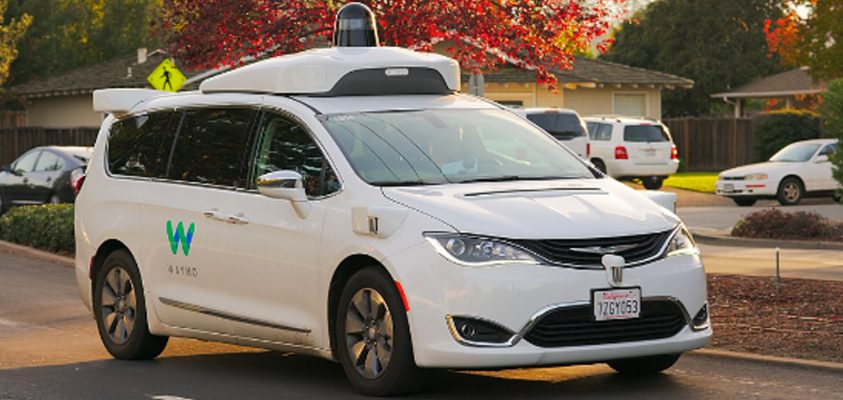Robotaxis Get Fares, And Administrative Guardrails, In California
Digital technologies change our world at a breakneck pace. They frequently leave government regulators in their dust as they race away. California is keeping pace with a technology that will dramatically impact our lives: self-driving taxis, or “robotaxis.” On November 19, the California Public Utilities Commission (CPUC) authorized Robotaxis to charge fares. It also erected administrative guardrails. The CPUC’s goal is guiding this emerging industry toward ensuring residents’ access and safety plus environmental sustainability. It is working to find the best route to deliver financial incentives for investment and social benefits for residents.
What Robotaxis Are, And Who Will operate them
Robotaxis are autonomous cars that carry passengers for a fee. They already operate in some test markets. The most well-known service is “Waymo One,” available in parts of Phoenix, AZ. (Waymo is a subsidiary of Alphabet, Google’s parent company.) Passengers book robotaxis through apps that work like Uber and Lyft. You specify a pick-up spot and destination, the number of passengers, and whether you are willing to share the ride with another fare. The nearest available robotaxi then comes for you. Robotaxis might be operated by car manufacturers like GM, companies whose main business is robotaxi fleets, or even individual self-driving car owners. The latter would be like Uber drivers, but their cars would pick up fares while they study, sleep, or work.
Robotaxis Have Major Social Benefit Potential
Robotaxis can offer tremendous benefits for users and communities. Imagine if persons with limited mobility, including the young, elderly, and those with disabilities, can be picked up at home and taken directly to any destination, at any time. Transportation barriers to education, jobs, and entertainment will drop away. The enhanced independence, free time, and peace of mind will genuinely enhance the quality of life and productivity for those persons and their families and friends. Robotaxis will improve community health, too. Fleets will have to be electric to compete. The operating cost of an electric vehicle is substantially lower than that of a petrol-powered car. Lower street-level toxic emissions and reduced greenhouse gas output serves everyone, not just robotaxi users. It is completely appropriate for California’s state government to guide the nascent robotaxi industry to deliver these vital health and welfare benefits to all residents.
Robotaxis Will Drive Down Transit Costs
Steeply falling robotaxi fares will help the state toward its goal. UBS forecasts that robotaxi fares will become 80% lower than today’s human-driven Uber and Lyft rides, and even cheaper than a New York’s subway ticket. That’s not surprising: Uber’s highest cost is driver recruitment. Digital technologies drive out cost. Think of the cost of email (free) versus posting letters.

Affordable robotaxis may spell future trouble for mass transit, which loses money in virtually every United States city. Mass transit will never offer door-to-door, on-demand service like robotaxis.
Highly Profitable And Self-Sustaining
Robotaxis have substantial financial potential. UBS projects that the worldwide market will reach $2 Trillion by 2030. People love car rides. Analysts estimate corporate robotaxi operators might make a $30,000 profit per vehicle per year. Elon Musk claims that your Tesla can become your annual $30,000 robotaxi side-gig and pay you $300,000 over the vehicle’s lifetime. I can see a button in the Tesla app labeled, “Go Make Money.” Robotaxis have abundant revenue possibilities. Walmart partners with GM’s San Francisco subsidiary, Cruise, on robotaxi retail deliveries. When a robotaxi isn’t carrying a fare, it delivers groceries. New York City startup, Cargo, places vending machines in Uber vehicles and can also serve robotaxis. They even stock wine: no drivers, no DUIs.
What California Will Require of Robotaxis
Balancing rewards for robotaxi providers with substantial social benefits for residents is challenging but essential. It is easy to envision a “Go Make Money” algorithm with inadvertent built-in biases like “don’t go to that neighborhood,” or “don’t pick up those riders.” It would be the transportation equivalent of home mortgage red-lining. Forward-looking regulation is totally appropriate. California’s fare permits come with social responsibility hooks. Permit holders must submit quarterly reports on:
- Pick-up and drop-off locations for individual trips;
- The availability and volume of wheelchair accessible rides;
- Service levels to disadvantaged communities;
- The fuel type used by the vehicles and electric charging;
- The vehicle miles traveled, and passenger miles traveled, and
- Engagement with advocates for accessibility and disadvantaged communities.
CPUC Commissioner, Genevieve Shiroma, noted: “Today we usher in an important milestone for the CPUC’s regulation of transportation in California by authorizing an expanded deployment framework for autonomous vehicles that protects passenger safety, expands autonomous vehicle availability to all of Californians – including disadvantaged and low-income communities – and works to reduce greenhouse gases.”
California’s Size Steers U.S. Standards
California automotive standards and guidelines strongly influence U.S. national policy. California has 15 million registered passenger vehicles, nearly one in seven cars in the United States. Twelve other U.S. states follow California’s exacting automobile emissions standards. Together they have 35% of the country’s registered automobiles. California’s clout is so significant that in 2019, President Donald Trump tried to revoke the state’s ability to set its own emissions targets. He did not want one state setting a defacto national rule. California’s tough requirements, like mandating that the fleets of brands sold in the state achieve an average fuel economy of 54.5 miles per gallon by 2025, helped the state achieve a 20.2% per capita decrease in greenhouse gas emissions from transportation between 2000 and 2017. Billions of people can benefit if the CPUC’s action influences global design of robotaxi services to ensure that persons with disabilities, the disadvantaged, and the environment are well served.
Government Guardrails Optimize An Exponential Technology’s Benefits
No region identifies more with the automobile lifestyle than California. Car trends still start there in major brands’ design studios, engineering labs at Waymo, Uber, and Lyft, and manufacturing lines at Tesla. As a businessman, I’m confident that if the robotaxi industry drew its own map it would chart a highly-efficient, profit-optimized course. It would also probably, unintentionally, increase the health and wellbeing gap between those with and without access to this transportation revolution.The CPUC’s action is balanced and proactive governance of rapid technology growth. It strives to optimize residents’ total benefit and keep plenty of well-deserved rewards for the business risk-takers making the new industry happen. Title photo by Dllu – Own work CC BY-SA 4.0





